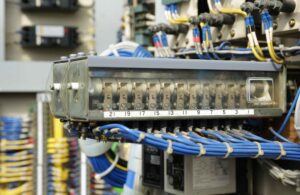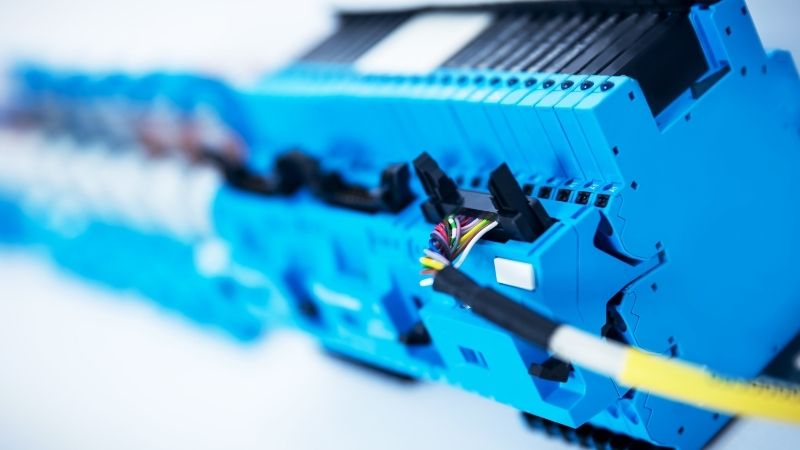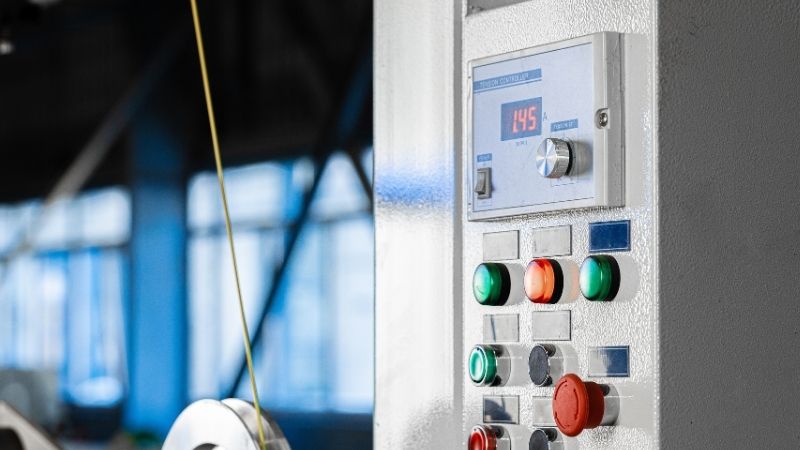What is a Safety PLC? Understanding Safety and Automation
A Safety PLC is a specialized type of PLC designed to manage and monitor safety-related functions within an automation system. Unlike standard PLCs, safety PLCs are built to adhere to strict safety standards, ensuring that any potential hazards are mitigated effectively.
Table of Contents
What is a Safety PLC?
A Safety PLC is engineered specifically to handle safety-related tasks within an industrial environment. These devices are designed to ensure that machinery operates safely and predictably, reducing the risk of accidents.
The architecture of safety PLCs includes redundant components to enhance reliability and minimize the chances of failure.
Key Features of Safety PLCs
- Integrated Safety Functions: Safety PLCs are equipped with features that monitor safety-critical operations. They can detect faults and anomalies, ensuring that the system responds appropriately.
- Compliance with Safety Standards: Safety PLCs must adhere to international safety standards such as IEC 61508, which defines the functional safety of electrical/electronic/programmable electronic safety-related systems.
- Program Flow Control: Effective program flow control in safety PLCs guarantees that safety functions execute in a safe and predictable manner.
Applications of Safety PLCs
Safety PLCs are used in various applications, including:
- Machine Safety: They control safety devices like light curtains and safety interlocks to protect workers.
- Process Automation: In hazardous environments, safety PLCs ensure that processes are automated while maintaining safety.
How do Safety PLCs differ from Standard PLCs?
While both types of PLCs play essential roles in automation, safety PLCs and standard PLCs serve different functions. Standard PLCs are primarily used for general control tasks, while safety PLCs focus on safeguarding operations.
Differences Explained
- Functionality: Standard PLCs manage routine operational tasks without safety considerations, whereas safety PLCs integrate safety functions into their programming.
- Safety Integrity Levels (SIL): Safety PLCs must meet specific SIL requirements, which standard PLCs do not. This makes safety PLCs more reliable in hazardous situations.
- Programming Complexity: Safety PLC programming often involves additional safety measures and protocols, making it more complex compared to standard PLC programming.
Choosing the Right PLC
When deciding between a safety PLC and a standard PLC, consider the following:
- Safety Requirements: If your application involves hazardous environments, opt for a safety PLC.
- Regulatory Compliance: Ensure compliance with safety standards relevant to your industry.
What are the key Safety Functions of a Safety PLC?
Safety functions are crucial for the operation of a safety PLC. These functions are designed to detect faults and ensure that machinery operates safely.
Common Safety Functions
- Emergency Stop: A fundamental safety function that halts operations immediately to prevent accidents.
- Safe Torque Off (STO): This function cuts power to the motor, preventing it from generating torque, which is critical in stopping machinery effectively.
- Safety Monitoring: Continuous monitoring of safety-related operations ensures that any anomalies are detected and addressed promptly.
Implementation of Safety Functions
Integrating safety functions requires:
- Careful Programming: PLC programming must account for all possible failure modes.
- Regular Testing: Safety functions should undergo routine testing to ensure they operate correctly under all conditions.
Understanding Safety Integrity Levels (SIL)
Safety Integrity Level (SIL) is a measure of the reliability of safety functions within a safety system. It ranges from SIL 1 (lowest) to SIL 4 (highest), indicating the likelihood that a safety function will perform correctly in response to a hazardous event.
Importance of SIL
Understanding SIL is essential for:
- Risk Assessment: Identifying the required safety measures depending on the risk associated with a process.
- Selecting Safety PLCs: Ensuring that the chosen safety PLC meets the necessary SIL for your application.
Compliance with IEC 61508
IEC 61508 defines the requirements for achieving various SIL levels, guiding the design and implementation of safety systems. Compliance with this standard ensures that safety PLCs are robust and reliable.
Why are Safety PLCs crucial for Workplace Safety?
The integration of safety PLCs in industrial environments significantly enhances workplace safety. They provide a systematic approach to managing risks associated with machinery and automation processes.
Enhancing Workplace Safety
- Accident Prevention: By controlling safety functions, safety PLCs help prevent accidents that can result in injuries or fatalities.
- Increased Productivity: A safer work environment leads to improved employee morale and productivity, as workers feel secure in their surroundings.
Regulatory Compliance
Many industries are subject to stringent safety standards and regulations. Implementing safety PLCs not only ensures compliance but also demonstrates a commitment to workplace safety.
Frequently Asked Questions
Safety PLCs are designed to handle safety functions and comply with strict safety standards, while standard PLCs are used for general control tasks.
Safety PLCs are commonly used in machine safety, process automation, and any application where safety is a priority.
SIL levels help determine the reliability of safety functions and guide the selection of safety PLCs based on the risk associated with different processes.
Regular testing ensures that safety functions operate correctly and can detect and mitigate hazards effectively.
Safety standards provide guidelines for the design, implementation, and operation of safety PLCs, ensuring compliance and reliability.
Power your projects with brand-new, original Omron, Mitsubishi, Schneider PLC – in stock, ready now!
Conclusion
In summary, safety PLCs are essential components in modern automation systems, ensuring that workplace safety is prioritized. Here are the key points to remember:
- Safety PLCs are designed for safety-critical applications.
- They differ significantly from standard PLCs in terms of functionality and compliance with safety standards.
- Understanding Safety Integrity Levels (SIL) is crucial for selecting the appropriate safety PLC.
- Regular testing and monitoring of safety functions are necessary to maintain a safe working environment.
Looking for new, original PLCs for your projects? At Kwoco, we stock the latest PLCs from top brands like Omron, Mitsubishi, and Schneider. Shop with confidence—fast shipping, guaranteed quality! Buy Now
Contact Us
Just fill out your name, email address, and a brief description of your inquiry in this form. We will contact you within 24 hours.
You May Also Find These Topics Interesting

Top 10 Features of Omron PLCs That Make Them Industry Leaders
Programmable Logic Controllers (PLCs) are the backbone of modern industrial automation, and Omron has consistently been at the forefront of this technology. Omron PLCs are renowned for their reliability, versatility, and advanced features, making them a top choice for industries worldwide. In this article, we’ll explore the top 10 features of Omron PLCs that set them apart as industry leaders.

Can I use PC instead of PLC?
In the ever-evolving world of industrial automation, a pressing question often arises: Can I use a PC instead of a PLC? With the advancements in technology, both PLCs (Programmable Logic Controllers) and PCs (Personal Computers) have become integral in controlling industrial processes. This article explores the major differences between these two control options, helping you decide which is best suited for your automation system.

What are the Three Types of Photoelectric Sensors?
What Are the Three Types of Photoelectric Sensors? When it comes to industrial automation, precision is key. But how can






